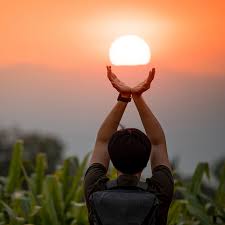Well, if you want to know more about the longest day of the year then look further to this article. Here we have provided all the major information you need to know about the summer solstice. Google Doodle Marks Summer Solstice

What is the summer solstice?
The summer solstice which is also known as midsummer takes place when one of the Earth’s poles has its extreme tilt toward the Sun. Solstice is derived from the Latin words where sol means Sun and sisters means to stand still.
Solstice basically occurs twice a year, and the occurrence of the summer and winter solstices marks the lengthiest as well as shortest two days of the year, respectively.
The literal meaning of Summer Solstice
Summer Solstice is also known as the ‘June Solstice’. Here is the literal meaning of ‘Solstice’:
Solstice = Latin words ‘Sol’ that means Sun; and ‘Stitium’ that means to a standstill
These Latin words, once combined, translate to ‘Sun standing still.
When is the summer solstice this year?
This year June 21, Friday, will mark the summer solstice for anyone living north of the equator. The summer solstice is almost upon us and tomorrow will be the day of 2019. It occurs when the sun is directly over the Tropic of Cancer, or 23.5 degrees north latitude. This is going to happen at exactly 11:54 am Eastern on Friday the 21st.
When solstice does occur?
The summer solstice occurs for the duration of summer. The summer solstice occurs in the month of June in the Northern Hemisphere as well as the December solstice occurs in the Southern Hemisphere.
It basically depends on the shift of the calendar, the summer solstice comes about sometime in the middle of June 20 and June 22 in the Northern Hemisphere, and in the Southern Hemisphere it occurs in the middle of December 20 and December 23. The same dates in the opposite hemisphere are mentioned to be the winter solstice.
Why do we have a summer solstice?
As we all know that Earth orbits around the sun on a tilted axis so because of which in the middle of March and September, Earth’s Northern Hemisphere gets additional coverage to direct sunlight over the course of a day. On the other hand, the rest of the year, the Southern Hemisphere gets more. And that is why we have seasons.
Are there solstices on other planets?
Yes, there are also solstices on other planets as all the planets in our solar system rotate on a tilted axis because of which they too have seasons, solstices, and equinoxes. Some of these tilts are also minor such as in Mercury, which is tilted at 2.11 degrees. But the other ones are more similar to the planet Earth which is tilted at 23.5 degrees or is even more extreme such as Uranus, which is tilted to 98 degrees.
What are the Cultural aspects of summer solstice?
There is a lot of significance given to the summer solstice among various different cultures, but most of them recognize the event in some approach with holidays, festivals, as well as rituals around that time with themes of religion or fertility.
Also in some regions, the summer solstice mark the commencement of summer and the conclusion of the spring season. In some of the other cultural conventions, the solstice is nearer to the middle of summer.



Leave a Reply